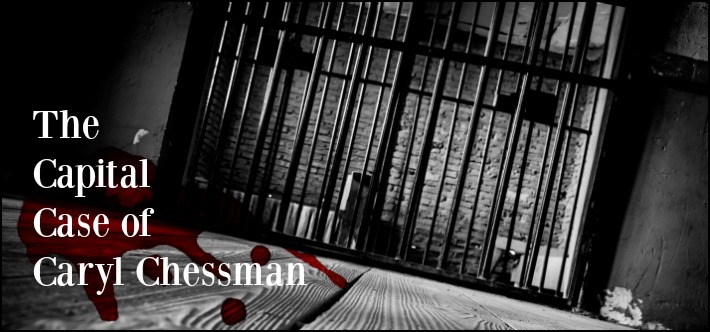Caryl Chessman spent 12 years on California’s death row protesting his 1948 conviction on 17 counts of robbery, kidnapping, and rape. Throughout his time as a ward of the state, Chessman wrote several books, letters, and essays claiming his innocence. He also filed a number of appeals, insisting that officials had not properly conducted his trial. Chessman’s tale of injustice was so compelling, it earned him eight stays of execution, as well as the support of public figures like author Norman Mailer, poet Robert Frost, former first lady Eleanor Roosevelt, and pastor Billy Graham, all of whom appealed for clemency on his behalf.
Despite Chessman’s very public efforts to avoid execution, his luck ultimately ran out and he entered the gas chamber in San Quentin Prison on May 2, 1960. Yet even the finality of that act seemed in doubt when a call came minutes later, delivering a message from a federal judge who had issued yet another stay of execution. However, prison officials insisted that the call had arrived too late and that they couldn’t open the chamber without endangering the lives of staff members. (Newspapers reported that the secretary who placed the call had misdialed during her first attempt, and that had her initial call gone through, it would have arrived before the execution began.) So it was that, after years of legal wrangling, 39-year-old Chessman met his long-delayed, yet somehow still premature, end.
The fact that Chessman spent most of his adult life behind bars probably didn’t surprise people who knew him as a teenager. Born Carol Whittier Chessman in St. Joseph, Michigan in 1921, Chessman (who later changed the spelling of his first name) moved to California with his family in 1922. As a teenager, he engaged in a series of petty crimes—mostly car thefts—that led to his incarceration in youth lockups. Then, as a member of the “Boy Bandit Gang,” he took part in robberies for which he received jail time in adult prisons. He was released in 1947.
The crimes that led to Chessman’s demise occurred shortly after that, in January 1948. A series of armed robberies in the greater Los Angeles area kept police on high alert, especially once the culprit began pulling over couples in cars, stealing their possessions, and sexually assaulting the female occupants. The so-called “Red Light Bandit” hadn’t murdered anyone, but the public feared what would happen if his crime spree continued.
Witness statements allowed police to issue an all-points bulletin for the mystery assailant. Within hours of the bulletin’s release, officers apprehended Chessman and an accomplice, David Knowles, in a car that had been used during a robbery earlier that month. A few days after his arrest, Chessman confessed to the Red Light Bandit’s crimes (though he later said that police had coerced the confession). At Chessman’s trial, he was found guilty of 17 of the 18 charges against him. Knowles was also found guilty, though because he faced fewer charges than Chessman, he avoided the death penalty. Knowles’ convictions were thrown out in 1950.
That Chessman faced the death penalty for a crime other than murder was an anomaly brought about by the existence of so-called “Little Lindbergh Laws,” which many states passed following the kidnapping and murder of 1-year-old Charles Lindbergh, Jr. in 1932. Under California law, kidnapping became a death-penalty offense if committed with the intent to do bodily harm. The fact that Chessman dragged women from their cars to assault them was considered just such an offense, and led to his execution. The Little Lindbergh Laws are no longer in effect.
In addition to his autobiography, “Cell 2455, Death Row,” Chessman’s story is the subject of several books, as well as a 1955 movie with the same title as his autobiography.

Leave a Reply